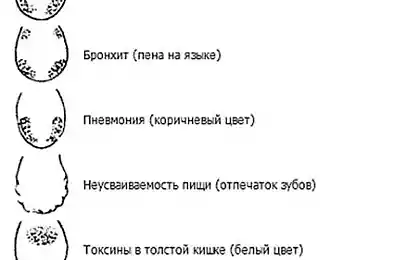277
9 Body Language Signals You Can Misinterpret
Not every gesture can be considered “talking” – some may simply be a cultural feature or a comfortable body position.

The human body speaks a language that is older than words. Every day, we unknowingly read hundreds of nonverbal signals, trying to understand the true intentions of the interlocutor. But what if our interpretations are often wrong? Modern research shows that up to 70% of attempts to decipher body language end in incorrect conclusions.
Albert Mehrabian, a pioneer in nonverbal communication, found that only 7% of information is conveyed by words, 38% by tone of voice, and 55% by body language. However, his research focused exclusively on situations where verbal and non-verbal messages contradicted each other.
The problem is that we often forget context, cultural differences, and individual identities. What is considered a sign of aggression in one culture may be a sign of respect in another. Here are nine common mistakes in body language interpretation.
1. Crossed arms = protective position
1 The classical interpretation of crossed arms as a sign of a closed or defensive position may be fundamentally wrong. A 2019 study by the University of Rochester found that 60% of people cross their arms simply because of physical comfort.
Alternative causes: Cold in the room, lack of pockets, the usual position for concentration, an attempt to support the chest (especially in women), or simply a comfortable position of the hands with prolonged standing.
It's important to remember: Before drawing conclusions, pay attention to the temperature in the room, the duration of the conversation and the general context of the situation.
2. Lack of eye contact = lying or insecure
2 The myth that liars don't look in the eye is so ingrained in the mass consciousness that many sincere people suffer from false accusations. In fact, research shows that experienced liars often maintain eye contact even more intensely than usual.
Dr. Pamela Meyer, author of How to Recognize Lies, notes, “Some of the most convincing liars look straight in the eye because they know they’re expected to.”

Cultural differences play a huge role in eye contact patterns. In some Asian cultures, a direct look at an older or authoritative person is considered disrespectful. People with autism or social anxiety may also avoid eye contact without any ulterior motives.
3. Touching the face = nervousness or deception
3 A person touches their face an average of 16 times per hour, according to a study by the University of New South Wales School of Medicine. Most of these touches occur unconsciously and are not related to an emotional state.
Touching the face can be caused by itching, dry skin, habit, reflection, fatigue, or simply a desire to improve hair.
4. Fast speech = nervousness
4 The tempo of speech varies greatly depending on the region, culture and individual characteristics. New Yorkers speak an average of 25 percent faster than southerners, which doesn’t make them any more nervous.
Some people are naturally fast speakers, especially when they are passionate about the topic of conversation. In addition, in stressful situations, some people, on the contrary, slow down speech, carefully choosing words.
5. Distance in conversation = attitude to the interlocutor
5Edward Hall identified four areas of interpersonal communication, but his research was conducted primarily among European-Americans. In different cultures, ideas about comfortable distance are radically different.
For example, in Arab countries, the normal distance for business communication is about 1 meter, while in Scandinavia, a distance of 1.5-2 meters is considered comfortable.
6. Body tilt = level of interest
6 The tilt of the body can be due to many factors: stool height, back problems, an attempt to hear the interlocutor better, or just a habit. People with hearing problems often unknowingly lean toward the sound source.
7. Hand gestures = emotional state
7 The intensity of gesticulation strongly depends on the cultural background. Italians use an average of 3 times more hand gestures than Britons, which doesn't make them any more emotionally unstable.

8. The position of “closed” = unwillingness to communicate
8 What we interpret as a “closed posture” may be the result of physical discomfort, cold, or just habit. People who work a lot at the computer often take certain poses because of professional characteristics.
9. Microexpressions = hidden emotions
9Paul Ekman popularized the concept of microexpressions, but subsequent studies have shown that the accuracy of their interpretation even in trained professionals does not exceed 60%. Many "microexpressions" may just be random muscle contractions.
A 2016 study in the Journal of Nonverbal Behavior found that trying to read microexpressions without taking context into account leads to erroneous conclusions in 40% of cases.
How to interpret body language correctly
Baseline rule: Observe a person’s normal behavior before drawing conclusions about changes in their body language.
Cluster analysis: Pay attention to the set of signals, not to individual gestures. One signal rarely speaks volumes.
The context is first and foremost: Consider the situation, cultural background, physical condition and environment.
Avoid projections: Don’t attribute your own patterns of behavior and interpretation to others.
Body language is a complex communication system that requires a deep understanding of context, culture, and personality. Instead of relying on simplistic interpretations, it is worth developing empathy and observation, remembering that each person is unique in their ways of nonverbal expression.
Glossary
Nonverbal communication is the transmission of information without the use of words, through gestures, facial expressions, postures and other bodily signals.
Proxemics is a field of psychology that studies the spatial aspects of communication, including the distance between interlocutors.
Microexpressions are short-term (1/25 seconds) involuntary facial expressions that can reveal hidden emotions.
A baseline is a common pattern of human behavior that serves as a reference point for identifying changes.
Cluster analysis is a method of interpreting body language based on the analysis of a set of signals rather than individual gestures.
Cultural patterns are persistent patterns of behavior characteristic of a particular culture or social group.
Projection is the attribution of one’s own thoughts, feelings, or motives to others.
The article is based on modern research in the field of psychology and nonverbal communication. Remember that interpreting body language is an art that requires practice and constant learning.
3 traps that conscientious people fall into
How to respond beautifully to provocations, depreciation, insult, rudeness























